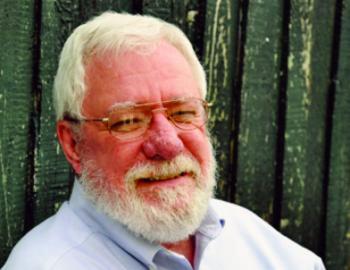
Jim Bradshaw
Looking at the past
I’ve been having fun lately looking at some Depression-era photographs of south Louisiana that used to be really hard to find, but are now only a mouse-click away.
Most of us know that President Franklin D. Roosevelt began a series of programs during the Depression designed to help people thrown out of work or off their farms, One of the most controversial was the Resettlement Administration, begun in 1935 to help displaced farmers by moving them to arable land and giving them low-interest loans.
The program was directed by Columbia University economist Rexford Tugwell, who quickly recognized that he had to win a major battle for public opinion to make his program successful.
He decided, among other things, to send photographers across the nation to document rural life, especially poverty on the farm, and, also to help keep bread on the tables of hungry photographers.
This photography program, which eventually fell under the auspices of the Farm Security Administration and Office of War Information, produced 170,000 negatives, 88,000 of which were actually printed into photographs. That collection is now housed in the Library of Congress.
Most of us would recognize some of the most famous of those pictures — the image of a worn, destitute mother staring despairingly into space is probably the best known. They represent a treasure trove of the photography of the era, and until recently most of them were as hard to find as buried treasure.
Unless you knew what you were looking for and where to look, photos of mostly local interest were buried so deep in the library’s archives they were all but impossible to see.
But now a program developed by Yale University lets us search through the collection via the Internet and see what the photographers saw.
The one who visited southwest Louisiana was Russell Lee, probably best known for his documentation of the eviction of Japanese Americans from the West Coast at the beginning of World War II. He brought his camera to south Louisiana in the fall of 1938, hitting Acadia Parish just in time for the 1938 National Rice Festival.
In a week or so he took 256 photos documenting the festival — everything from Crowley businesses being spruced up in anticipation of the event, to folks cooking hamburgers in a concession stand, to the rice-eating competition, to the largest-family contest, to the SLI band and floats during the festival parade — as well as the rice harvest itself, from cutting to milling to bagging.
The Acadia Parish collection also includes photos of several farms, particularly the Joseph LeBlanc farm near Crowley, a fais do-do, and photos from Rayne including the Louisiana Frog Company sign, “Phone 96,” and an amateur boxing match.
A good number of the 80 photos from Vermilion Parish continue to document rice milling and packaging operations, but there is also a series of photos of a Madame Dronet spinning and weaving cotton, portraits of several sugarcane farmers from the Erath area, an Abbeville restaurant sign advertising raw oysters for a nickel a dozen, and a series of shots from an Abbeville junkyard illustrating everything from a display of Model T parts to one labeled “wheels, tires, and general junk.”
The sugar industry is further documented by a large number of the 134 photos made in Iberia Parish, but there are also photos of a migrant chair maker and another of a migrant stove maker who were working near Jeanerette. (Remember, these were the Depression days and lots of people were tramping the roads to find whatever work they could wherever they could.)
Two dozen photos from St. Martin Parish include — of course — the St. Martinville church and the statue of Evangeline, but also the Evangeline Hot Sauce factory, and the sugar mill and an Acadian home in Breaux Bridge,
Among a dozen photos from St. Mary Parish are a series of Jean Broussard, identified as a “Cajun truck driver.” In several of them he is talking to a state trooper. The photographer doesn’t say how that conversation between trucker and trooper got started, but they appear amicable enough in the picture.
You can look at the photos yourself by going to http://photogrammar.yale.edu and following the instructions there.
You can contact Jim Bradshaw at jimbradshaw4321@gmail.com or P.O, Box 1121, Washington LA 70589.
- Log in to post comments
